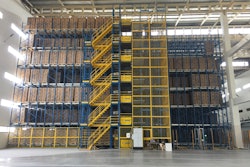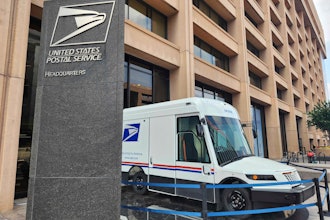
Traditional inbound freight management was a relatively simple process. Resellers purchased items from one or two vendors, and consumers visited the store. With the rise of e-commerce, the demand for product variety led to a much more complex series of events. Additionally, the ability of consumers to blend shopping experiences across online and brick-and-mortar stores has transformed inbound supply chain processes again, causing an influx of small package inbound freight, requiring more effective parcel inbound logistics management.
Unfortunately, managing hundreds, if not thousands, of parcel inbound logistics shipments lead to significant problems on the dock. In addition, new regulatory and compliance measures are in the works for parcel shipping, notes PARCEL Magazine. Will shipments arrive in trucks, delivered by carriers in batches, will the freight be sorted, or does another process take place? Who has the authorization to accept parcels? There are countless questions to ask, but the best way to address this influx is to follow 10 critical tips for parcel inbound logistics management.
1. Use Technology to Gain Parcel Inbound Logistics Visibility
The first step to improving parcel inbound logistics goes back to using modern tracking platforms, such as the Cerasis Rater, to gain better parcel inbound visibility. Visibility is key to understanding inbound freight costs.
2. Automate Inbound Parcel Putaway
Inbound parcels can be among the most voluminous shipments in modern business. Automating the inbound parcel putaway process reduces labor costs and enhances productivity.
3. Deploy Wearable Technologies to Streamline Scans and Documenting
Wearable technologies, including handheld scanners, augmented reality, biometrics trackers and AIDC technologies will streamline inbound scans and provide better documentation. More data amounts to better parcel inbound logistics management.
4. Integrate Inbound and Outbound Parcel Management
Shippers face significant challenges in managing inbound and outbound parcel management, and gaining control over inbound parcels requires integration with outbound parcel reducing the number of movements on your loading dock and offers benefits to carriers seeking to avoid empty hauls.
5. Develop a Robust Inbound Freight Routing Guide
The inbound freight routing guide affects parcels, as well as LTL and FT freight. Specify the process for handling and sending inbound parcels which may include carrier preferences, estimated time of arrival, parcel consolidation/deconsolidation, and prepaid or invoiced-based accounting for inbound, business-to-business (B2B) parcels.
6. Hold Vendors Accountable for Compliance With the Inbound Freight Routing Guide
Vendors, even those outside your control, should be held accountable for compliance with the inbound freight routing guide. Even Amazon Business offers unique shipping options and tools for the parcel inbound logistics management process.
7. Let Third-Party Marketplaces Do the Work for You
Third-party organizations that routinely send freight by parcels have the experience and technology to handle inbound freight management. However, it is essential to work together to ensure their expertise does not add to more costs for your organization.
8. Avoid Overscheduling Inbound Freight Deliveries
The loading dock is busy; avoid overscheduling of inbound parcel freight. Even though parcels are smaller in volume and weight, a transportation or logistics manager will often consolidate several parcels into LTL and FT deliveries. Account for these larger parcel deliveries, as well as the deconsolidation process.
9. Diversify Your Carrier Network
A diverse parcel carrier network improves carrier competition and provides a safeguard again general rate increases. With major parcel carriers, including UPS, FedEx, and USPS, asserts Pierbridge, launching general rate increases to the tune of 4.9 percent, 4.9 percent, and 3.2 percent respective, a diverse carrier network will help mitigate such increases. Meanwhile, FedEx is charging additional handling fees for packages weighing more than 70 pounds.
10. Remember Reverse Logistics
An effective parcel inbound logistics management program must consider those shipments arriving from customer returns. Since customer service depends on a high-quality, hassle-free returns process, effective inbound reverse logistics management is key to success. More importantly, parcel inbound logistics management deriving from reverse logistics is key to managing returns back to manufacturers and restocking undamaged items for reselling.
Put These Parcel Inbound Logistics Management Tips Into Action
Parcel inbound logistics management forms a vital section of your business, and depending on your type of business, parcel could be among the highest per-unit freight/shipping mode costs, which follows a 20-percent increase in global parcels through 2018, notes PARCEL Magazine, and inbound shipping volume of parcels will increase throughout 2019. Instead of risking the success of your business, exert control over inbound parcels by following the outlined tips and leveraging the expertise of proven solutions, including a TMS. In fact, the next post in this series will focus on how a TMS improves inbound logistics.
A version of this story first appeared on the Cerasis blog.
Adam Robinson oversees the overall marketing strategy for Cerasis including website development, social media and content marketing, trade show marketing, email campaigns, and webinar marketing. Mr. Robinson works with the business development department to create messaging that attracts the right decision makers, gaining inbound leads and increasing brand awareness all while shortening sales cycles, the time it takes to gain sales appointments and set proper sales and execution expectations.























